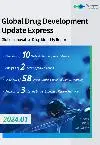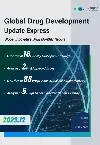AstraZeneca gets new Tagrisso OK as drug succeeds in another trial
20 Feb 2024
Clinical ResultDrug ApprovalPhase 3Accelerated Approval
Dive Brief:
AstraZeneca’s targeted cancer therapy Tagrisso can now be used alongside chemotherapy to treat a common type of locally advanced or metastatic lung tumor, following a Food and Drug Administration approval Friday.
The FDA cleared Tagrisso together with chemotherapy based on results showing the combination reduced the risk of disease progression or death versus Tagrisso alone, which is currently the first-line standard for non-small cell lung cancer that harbors mutations in a gene known as EGFR.
Over the weekend, meanwhile, AstraZeneca reported new clinical trial data showing Tagrisso outperformed placebo following chemoradiotherapy for Stage 3 EGFR-mutated non-small cell lung cancer that couldn’t be surgically removed. The results, which AstraZeneca will share with regulators, could further support early use of Tagrisso.
Dive Insight:
Tagrisso is at the center of AstraZeneca’s oncology resurgence. The drug, which first won approval in the U.S. in 2015, is the company’s second highest selling product, after the diabetes and kidney disease treatment Farxiga.
It has become a go-to treatment for EGFR-mutated lung cancers, which make up about 15% of the estimated 165,000 or so people who are diagnosed with non-small cell lung cancer each year. Over time, AstraZeneca has secured expanded clearance for its use earlier in metastatic treatment, as well as a role in the “adjuvant,” or after surgery, setting.
The latest approval, announced late Friday, could establish a new standard in the first-line metastatic setting. Adding chemo to Tagrisso extended progression-free survival by about nine months over Tagrisso monotherapy, results showed. The combination also appeared to work better in lowering the risk of cancer growth in the central nervous system.
The OK is also notable for Johnson & Johnson, which recently reported trial results showing a drug combination it’s developed beat Tagrisso monotherapy. Following Friday’s approval, physicians may now see Tagrisso plus chemo as the relevant comparator.
In the adjuvant setting, meanwhile, AstraZeneca recently shared data that proved Tagrisso used this way can considerably extend patient survival. The results “mandate testing for EGFR mutations in patients with early-stage non-small cell lung cancer,” said Benjamin Solomon, a medical oncologist at the Peter MacCallum Cancer Center in Australia, during a discussion of the data at a medical meeting last June.
For patients whose lung cancer is unresectable, new trial data AstraZeneca shared Monday show Tagrisso could help, too. Treatment resulted in a “statistically significant and highly clinically meaningful improvement in progression-free survival” versus placebo when given following chemoradiotherapy for Stage 3 non-small cell lung cancer.
Overall survival data favored Tagrisso, AstraZeneca said, but the results from the trial, called Laura, were not yet final.
“These highly impactful results for the Laura trial in this potentially curative early lung cancer setting further entrench Tagrisso as the backbone therapy for EGFR-mutated lung cancer,” said Susan Galbraith, head of oncology R&D at AstraZeneca, said in a statement.
'
For more details,please visit the original website
The content of the article does not represent any opinions of Synapse and its affiliated companies. If there is any copyright infringement or error, please contact us, and we will deal with it within 24 hours.
Targets
Hot reports
Get started for free today!
Accelerate Strategic R&D decision making with Synapse, PatSnap’s AI-powered Connected Innovation Intelligence Platform Built for Life Sciences Professionals.
Start your data trial now!
Synapse data is also accessible to external entities via APIs or data packages. Leverages most recent intelligence information, enabling fullest potential.





